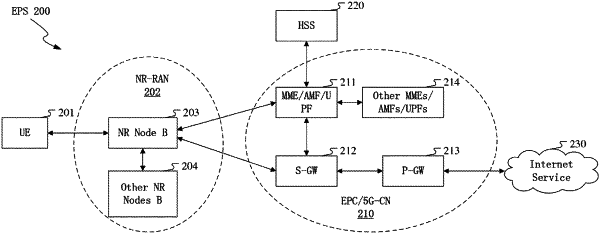| CPC H04W 72/04 (2013.01) [H04L 1/0057 (2013.01); H04L 1/0058 (2013.01); H04L 5/0016 (2013.01)] | 20 Claims |

|
1. A User Equipment (UE) for wireless communication, comprising:
a first receiver, to receive a first signaling, the first signaling being used for determining a first time-frequency resource group, and the first time-frequency resource group being reserved to transmission of a first bit block; to receive a first radio signal; to receive K0 piece(s) of information; and
a first transmitter, to transmit K radio signals and the first bit block in K time-frequency resource groups;
wherein time-domain resources occupied by the first time-frequency resource group are overlapping with time-domain resources occupied by at least one of the K time-frequency resource groups, and any two of the K time-frequency resource groups are orthogonal in time domain; the K radio signals are transmitted in the K time-frequency resource groups respectively, and the first bit block is transmitted in only K1 time-frequency resource group(s) among the K time-frequency resource groups; the first signaling corresponds to a first type or a second type, and whether the first signaling corresponds to the first type or the second type is used for determining the K1 time-frequency resource group(s) from the K time-frequency resource groups; the K is a positive integer greater than 1, and the K1 is a positive integer not greater than the K; the first bit block is related to the first radio signal; the K0 piece(s) of information is(are) used for determining the K time-frequency resource groups, and the K0 is a positive integer not greater than the K;
the first bit block carries a HARQ-ACK feedback for the first radio signal, the K0 is equal to the K and the K0 pieces of information are used for determining the K time-frequency resource groups respectively;
or, the first radio signal includes a reference signal, and the first bit block is used for indicating a CSI (Channel State Information) obtained based on a measurement of the first radio signal, the K0 is equal to 1 and a second bit block is used for generating any one of the K radio signals.
|